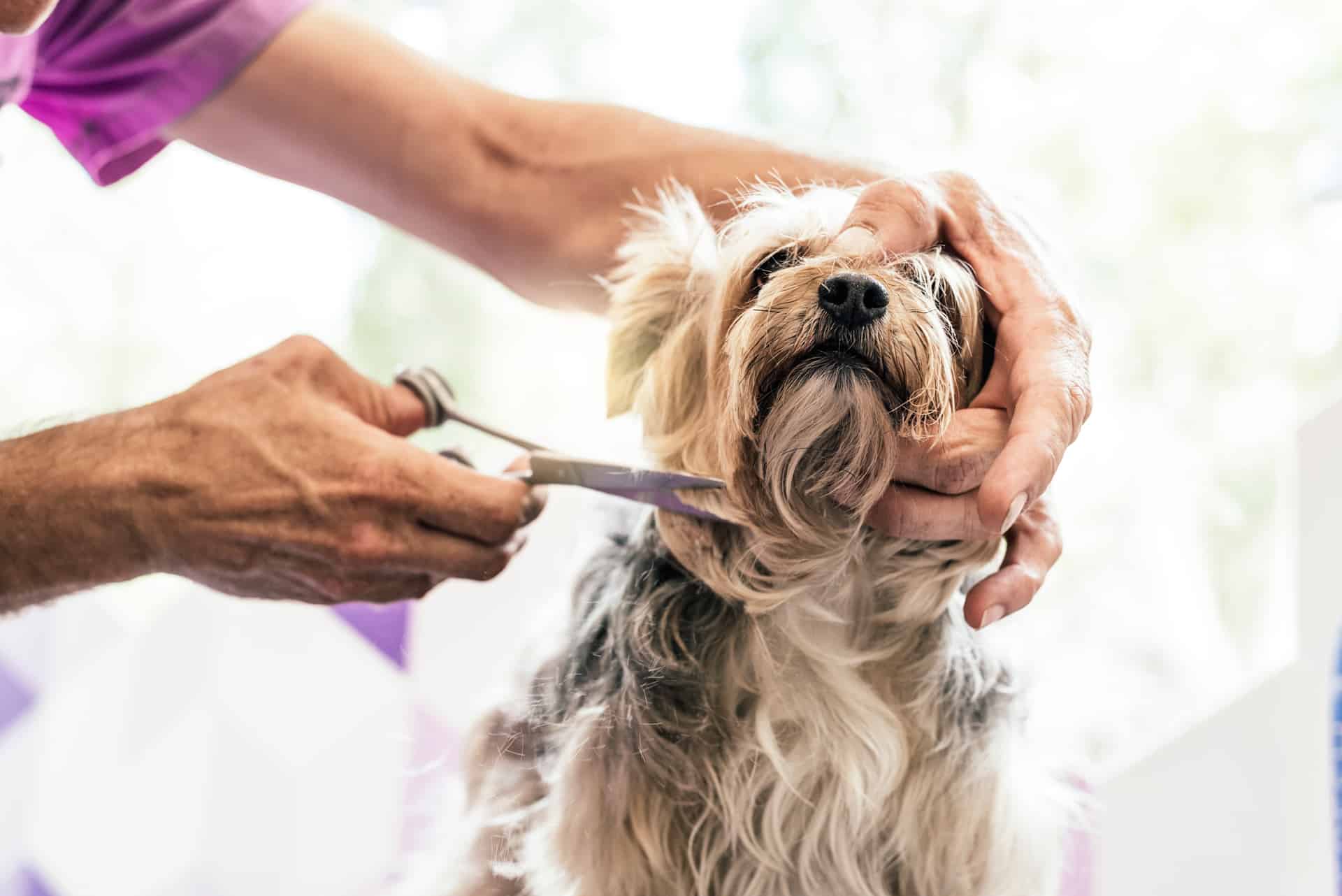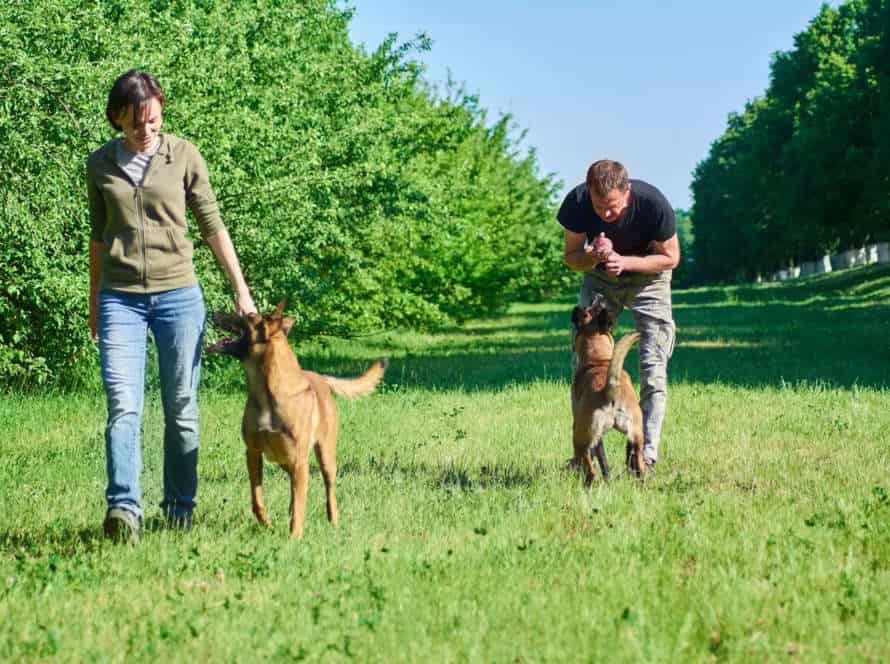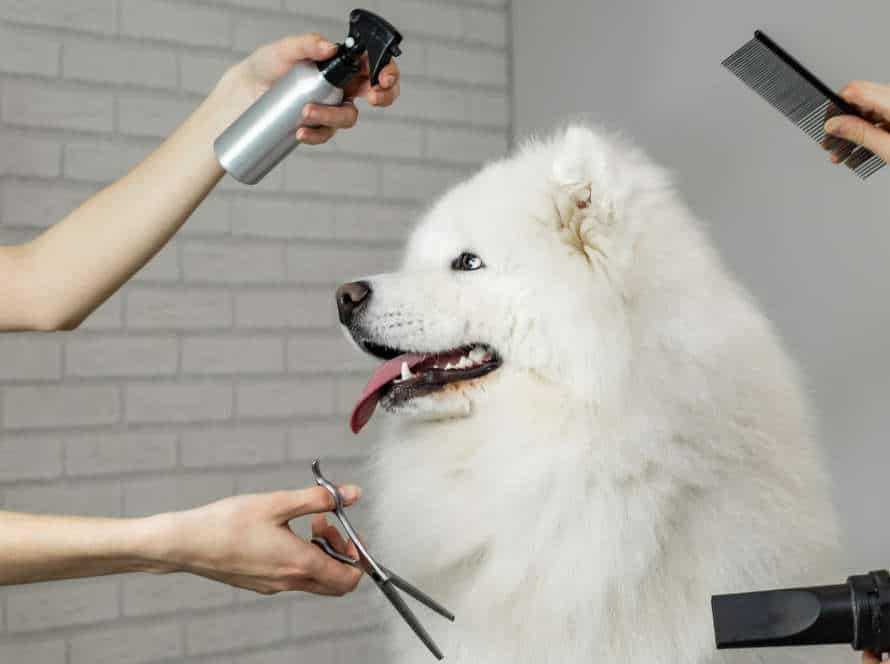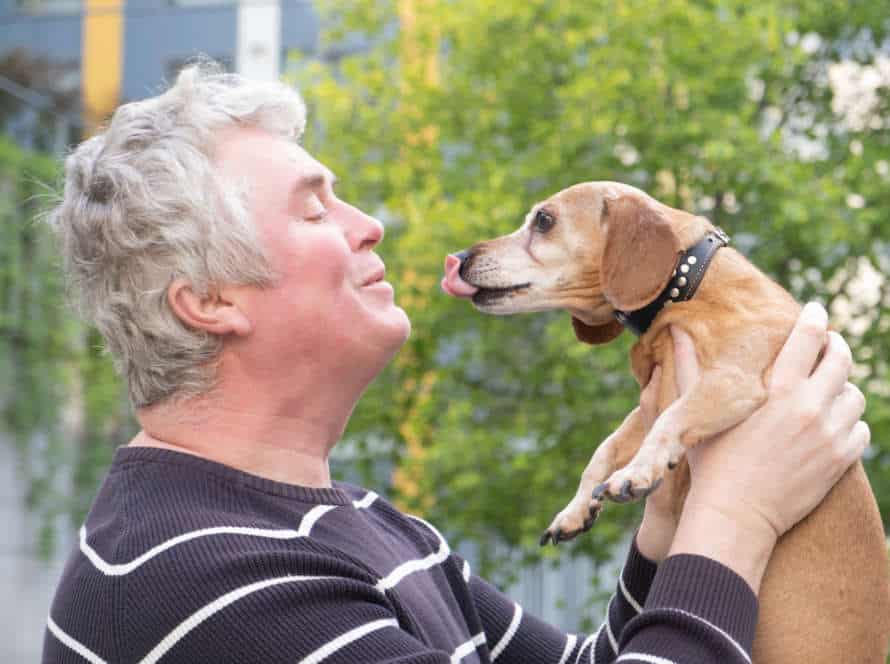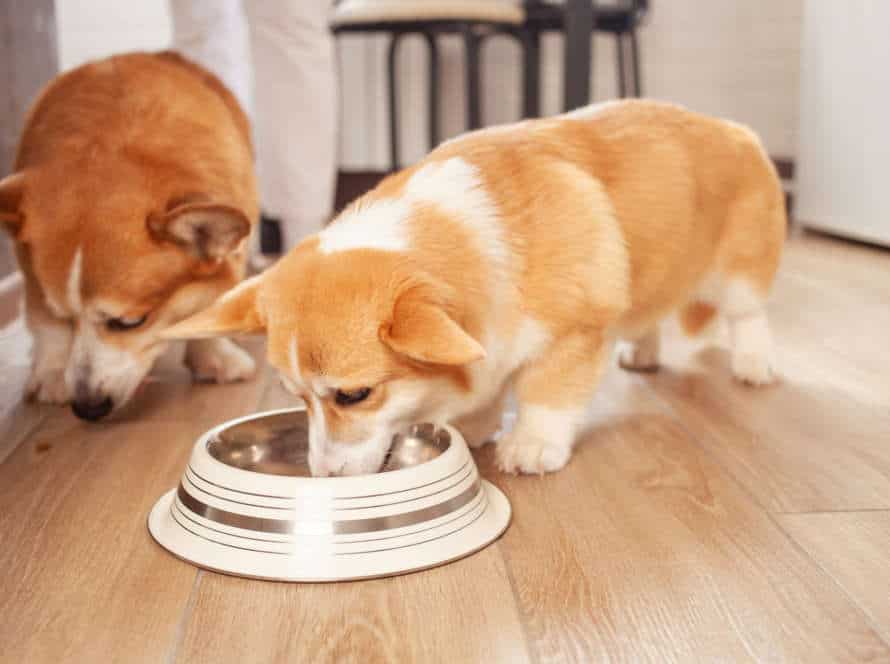A Gentle Approach to Grooming Your Dog’s Sensitive Areas
Dogs have sensitive spots that need extra care when groomed. A gentle approach keeps them calm and comfy. Here are some tips:
- Ears – Wipe with a damp cloth or cotton ball. Skip the Q-tips and strong cleaning stuff.
- Paws – Cut nails carefully. Inspect for injury or itchiness.
- Tail – Brush softly to get rid of tangles and mats. Handle the base of the tail with caution – it’s very sensitive.
Reward with treats and compliments during grooming. This’ll make them think of it as a nice experience. Easier grooming in the future!
Understanding Your Dog’s Sensitive Areas
Grooming your pup’s sensitive spots can be tricky. Eyes, ears, and paw pads require extra care. To guarantee comfort and safety, it’s important to know the basics and use gentle techniques. This will reduce stress and make the experience more positive.
Identifying areas that needs gentle grooming
Knowing your pooch’s delicate spots is key for a soft and positive grooming experience. Canines can get anxious, uncomfortable, or even hostile when they feel pain in certain parts of their figures. These are some sensitive regions to be mindful of:
- Ears: Dogs can experience pain or distress when their ears are touched or cleaned. A delicate and watchful attitude is needed to groom this area.
- Paws: Canines’ paws are fragile and prone to harm. Cutting extra hair and keeping the nails short can aid in maintaining healthy paws.
- Belly and groin: These parts can be sensitive to the touch and require a tender approach when grooming.
- Tail: Some dogs are touchy about their tails being touched or groomed. This area needs to be approached with care.
A soft approach to grooming your pup’s delicate areas can help them feel safe and secure while looking their best.
The importance of familiarizing with your dog’s body language
It’s key to know your pup’s body language. This will help you understand their feelings, needs and potential risks. Reading their body language can keep them and those around them safe. Here are some signs to watch out for:
- Ears: Upright ears show alertness. Flat ears mean fear or submission.
- Tail: A high wag usually means they’re happy. A low wag may signal fear, anxiety or insecurity.
- Eyes: Wide-open eyes signal alertness, excitement or aggression. Squinted eyes mean relaxation or sleepiness.
- Whiskers: Pointing forward and tense body means aggression or attack.
By learning these cues, you can safely groom sensitive areas like paws, ears and tail, without causing any distress.
Rewarding your dog to build trust
Reward your pup for positive behaviors to build trust. Especially when it comes to grooming and handling sensitive parts of the body, like paws, ears, and tail. Here’s the breakout:
- Identify the areas.
- Use a gentle brush or damp cloth.
- Give treats or praise for calm cooperation.
- No punishment – only love!
- Consistency is key – groom these areas regularly.
Pro tip: Positive reinforcement is great for creating a strong bond with your pup. Use it to encourage good behavior and create a loving environment.
Preparing Your Grooming Tools and Environment
Grooming your pup can be a challenge. To make it successful and comfortable, you must prepare. Here are some tips to do it right!
- Get the right tools.
- Set up the environment.
- Take your time.
- And remember, be gentle around sensitive areas.
Choosing the right grooming tools
Choosing the proper grooming tools is key for a successful and gentle way to groom your pup’s sensitive areas. Here are some tips to remember:
- Use a brush or comb that matches your dog’s coat type. A slicker brush is best for removing loose fur, whilst a comb is good for detangling.
- Clippers with adjustable sides can help keep your dog’s hair at the length you want. Choose clippers that make low noise and vibration to avoid stressing your pet.
- Scissors with rounded tips are ideal for trimming hair around sensitive areas like ears, face, and paws.
- Nail clippers or grinders in different sizes and power levels can help keep your dog’s nails at the right length. Pick one that is safe and easy to use. Avoid cutting the quick – this can cause pain and bleeding.
- Always opt for quality grooming tools that are durable and easy to take apart for cleaning and maintenance.
Pro Tip: Have all the grooming tools and products you need before starting to groom. Be gentle and patient to minimize stress and unease for your pup.
Setting up a comfortable grooming environment
Grooming your pup can be a strain for both you and your furry pal. So, setting up a lovely grooming space is a must to ensure a nice experience, especially if your pup has sensitive areas that need more attention.
Here are a few tips to make a comfy grooming environment for your pup:
- Pick a bright, calm, and wide area for grooming. A bright setting will help you to spot the areas you’re working on, and a quiet atmosphere will lessen the stress.
- Prepare your grooming tools beforehand to make sure you have all you need nearby.
- Take a gentle approach when dealing with your pup’s sensitive bits. Allow them lots of time to adjust to the process, and be patient.
- Keep your pup busy by giving them treats or toys during the grooming.
Creating a cozy grooming environment won’t only make the grooming more pleasant for your dog, but it’ll also help build trust and strengthen your bond.
Getting special treats to aid in grooming process
Using treats specially made for dogs during grooming can make it easier to manage your pet’s sensitive areas. Here’s some info to help you:
- Get quality grooming tools for your dog’s coat type and needs.
- Set up a comfy space with good light and no distractions or dangers.
- Use treats that your pet loves, like cheese or cooked meat.
- Reward your dog with treats when working on sensitive areas or when doing something they don’t like.
Be gentle and give treats during grooming to help your pup feel relaxed and happy.
Grooming Your Dog’s Sensitive Areas
Grooming your pup’s delicate areas can be scary. But, if you’re patient and gentle, it can be a fun experience for both you and your pup! Here are some tips for safe and effective grooming of your pet’s sensitive zones:
Grooming the sensitive face area
Grooming your pup’s delicate facial area needs extra attention and a gentle approach. Here are some tips to help!
- Use a soft-bristled brush. When brushing, start at the head and brush in the same direction as their fur.
- Use rounded-tip scissors. These are safer to use when trimming hair around eyes, ears, and muzzle.
- Be aware of their eyes and ears. Don’t let water or shampoo get in their eyes or ears. Use a damp washcloth to clean their eyes.
- Take breaks. If your pup is getting restless, take a break and play with them.
- Reward them. Give treats and praise throughout the grooming to let them know they’re doing great.
Grooming the underbelly and private parts
It’s essential to take a gentle approach when grooming your pup’s underbelly and private parts. These areas are very sensitive, and improper grooming can lead to skin irritation or even injury. Here are a few tips:
- Calmly talk to your dog in a gentle voice.
- Use a soft-bristled brush or comb to get rid of tangles or mats.
- If your pup has long fur around their privates, snip it with blunt-tipped scissors.
- Wash the area with a mild pet shampoo and warm water. Rinse it off and dry with a soft towel.
- Condition with a pet-friendly conditioner to keep the area hydrated and avoid skin irritation.
- If your pup is uncomfortable or in pain, stop grooming them and get help from a professional groomer or vet.
Grooming the paw pads
Grooming your pup’s paw pads is super important! Here’s what to do:
- Inspect their paws for any foreign objects, like mud or debris.
- Use a warm, wet cloth to wipe it away.
- Trim any overgrowing fur that might cause discomfort.
- Then, apply a paw balm or moisturizer to keep them moisturized and avoid cracking.
Pro tip: If your pup is sensitive to having their paws touched, start with paw massages gradually. Reward them with treats and kind words to make them feel comfy.
Addressing Common Grooming Challenges
Grooming can be a daunting mission for pet parents. Especially when it comes to your pup’s delicate areas! But have no fear. With the right technique, it can be a fun and stress-free experience for both you and your dog.
Let’s look at some common grooming challenges and how to address them:
Addressing the fear of clippers and scissors
Grooming your pup’s sensitive spots can be hard for their owners. Trimming fur with scissors is particularly tough. Many dogs are scared of the sound, feel, or sight of grooming tools. Here are a few tips to help with fear of clippers and scissors:
- Start off slowly and calmly. Let your pup smell and explore the grooming tools without turning them on.
- Use positive reinforcement. Praise your pup, give treats, or offer toys during grooming. Especially when they’re calm and still.
- Gradually introduce the sound. Turn the clippers or scissors on in front of your pup. Give them a reward if they stay relaxed.
- Use a gentle hand when grooming. Put minimal pressure on the clippers or scissors. Use slow, steady cutting motions.
- Take breaks when needed. If your pup gets too anxious or mad, take a break and start again later.
With patience and a kind approach, you can ease your pup’s fear of clippers or scissors. Make grooming a positive experience for both of you.
Cleaning tears stains on sensitive areas
Cleaning tear stains on your pup’s sensitive areas can be tough. Tears overflow from the tear ducts and cause discoloration and darker fur. Use a gentle approach to clean these stains without discomfort.
- Begin with a mild cleanser and warm water. Dampen a cloth or cotton ball for this. Don’t go for harsh soaps or chemicals, which could irritate their skin or eyes. White vinegar works too – mix equal parts of it and water. Apply with a soft cloth.
- Then rinse the area with warm water and dry it well.
Keep the fur around their eyes trimmed. Use blunt-tipped scissors and slowly go around the sensitive area.
Pro tip: If the tear stains are frequent or don’t go away, talk to your vet. It could be a sign of an underlying medical issue.
Addressing grooming aggression
Grooming aggression can be a problem for pet owners. Understanding why it happens and using a gentle approach can help. Reasons include lack of prior experience, sensitive spots, fear, and pain. Take it slow, stay calm, and use positive reinforcement. Here are tips:
- Begin with short grooming sessions and increase time.
- Use a soft, gentle touch – avoid pressure on sensitive areas.
- Use treats or rewards to create positive experiences.
- If the aggression persists, get professional help.
General Grooming Tips for Sensitive Dogs
Groomin’ your pup can be tricky. Especially if they’re sensitive in certain areas. Be gentle to avoid any scratchin’ or distress. This article is all ’bout tips for groomin’ sensitive dogs. We’ll look at how to care for their sensitive spots, makin’ the process fun for you and your pup.
Use positive reinforcement to reduce grooming stress
Grooming can be tough for sensitive dogs, but positive reinforcement can help reduce their worries and make it easier.
Here are a few tips to groom your pup’s sensitive areas gently:
- Give treats and kind words when they behave during sessions. It’ll create a good connection between grooming and nice experiences.
- Start with short sessions, then gradually increase the time as your dog feels more relaxed.
- Use a soft-bristled brush or comb to avoid irritating their skin. For extra sensitive areas, use a soft cloth or glove.
- Avoid restraining your dog while grooming. It’s better to get them used to handling by touching and stroking in a gentle and reassuring manner.
- Be patient, calm, and positive during the grooming process. Positive reinforcement will turn a stressful experience into a pleasant bonding time with your furry friend.
Regular brushing and combing to reduce matting
Brushing and combing can help stop matting and tangles in your pup’s coat. Especially if they have sensitive skin or allergies.
Here are some tips:
- Use a soft-bristled brush or comb with rounded teeth.
- Gently brush or comb in the direction of hair growth, starting at the base of the fur.
- Take extra care when brushing around sensitive areas such as the face, ears, and belly. Don’t tug or pull on the fur.
- Brush your pup’s coat at least once a week. If they have long fur, groom them more often.
Grooming helps keep your pup looking and feeling good. Plus, it boosts their health and well-being.
Pro Tip: Offer treats and praise to make grooming a positive experience.
Regular vet visits for complete health checkups
Regular vet visits are a must for your pet’s health. Here’s why:
- Prevention > Cure – Vet visits can spot potential issues before they become too serious.
- Vaccinations – Vaccines keep deadly illnesses away from pets. Regular vet visits make sure they’re up to date.
- Early diagnosis – Easy-to-treat conditions can be spotted early if you go to the vet regularly.
- General check-ups – Your vet can detect changes in your pet’s health, behavior and weight. They can also suggest lifestyle changes to prevent future problems.
Pro Tip: Set reminders for vet visits to ensure your pet is healthy and happy. Don’t forget!
Frequently Asked Questions
1. What are the sensitive areas in a dog’s grooming routine?
A: Sensitive areas in a dog’s grooming routine include ears, eyes, paw pads, and the anus.
2. How can I groom my dog’s sensitive areas gently?
A: You can groom your dog’s sensitive areas gently by using soft-bristled brushes, trimming the fur carefully, and using gentle cleansers specific to each area.
3. Are there any special techniques to groom a dog’s ears?
A: Yes, you should avoid getting water into the ear canal and use a damp cloth or cotton ball to clean the outer ear flap gently. Always check for signs of redness or inflammation and see a veterinarian if necessary.
4. Is it safe to use human shampoo on my dog’s sensitive areas?
A: No, you should use a dog-specific shampoo or cleanser that is gentle and formulated specifically for their sensitive areas.
5. Can I groom my dog’s sensitive areas at home, or should I see a professional groomer?
A: You can groom your dog’s sensitive areas at home, but it’s important to be gentle, cautious, and know what you’re doing. If you’re unsure, it’s always best to consult a professional groomer.
6. How often should I groom my dog’s sensitive areas?
A: It depends on the area, but generally, weekly grooming is recommended for sensitive areas such as ears, eyes, and paw pads.

